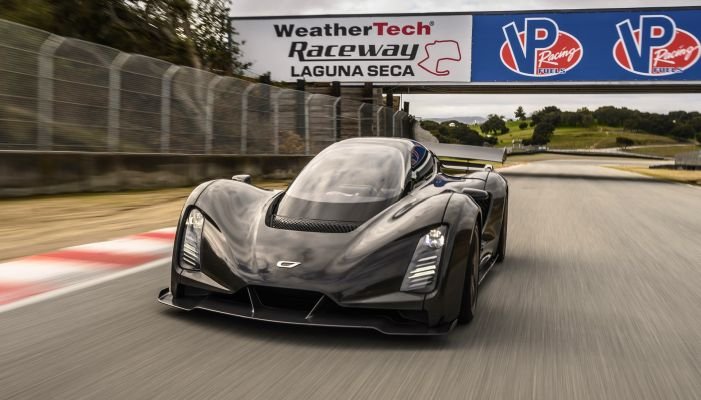The Czinger 21C isn’t just another boutique hypercar. It demonstrates a new way of building cars. The 21C’s construction does away with tooling, assembly lines, and all the other expensive trappings of traditional automotive manufacturing.
Central to this strategy is Czinger’s use of a proprietary production system that enables flexible, on-demand production. Almost all of the metal components—aluminum, titanium, and Inconel (a heat-resistant material originally developed for use in the aerospace industry)—are 3D-printed while composite body parts are formed in molds.
And instead of mating components together on a traditional assembly line, everything is done by robots in one central location.
It means the Czinger factory, located in Los Angeles, doesn’t need to be reconfigured for different models, only the software controlling it all needs to be changed.
And the way Czinger designs components is perhaps just as revolutionary. Because of the possibilities afforded by 3D printing, each component is computationally engineered and optimized for weight, efficiency and performance.
According to Czinger, its monocoque structure combines not only structural elements but also cooling (via thermosiphon processes), fluid routing, and even exhaust sound management.
The monocoque structure in the 21C weighs just 265 pounds, helping the car achieve a dry weight of less than 2,645 pounds. The feat is made all the more impressive when you consider the 21C packs a 1,233-horsepower hybrid drivetrain combining a twin-turbocharged V-8, three electric motors, and two—albeit small—batteries.
The low weight and high horsepower result in some insane performance numbers. They have worked closely with Michelin to ensure the 21C’s tires will be capable of such performance.
Czinger said it will start deliveries of a track-only version of the 21C (shown in blue) in late 2021. A street-legal version will follow in 2022.
Reference- Futurism, Czinger website & PR, New Atlas, MotorTrend, Motor Authority















